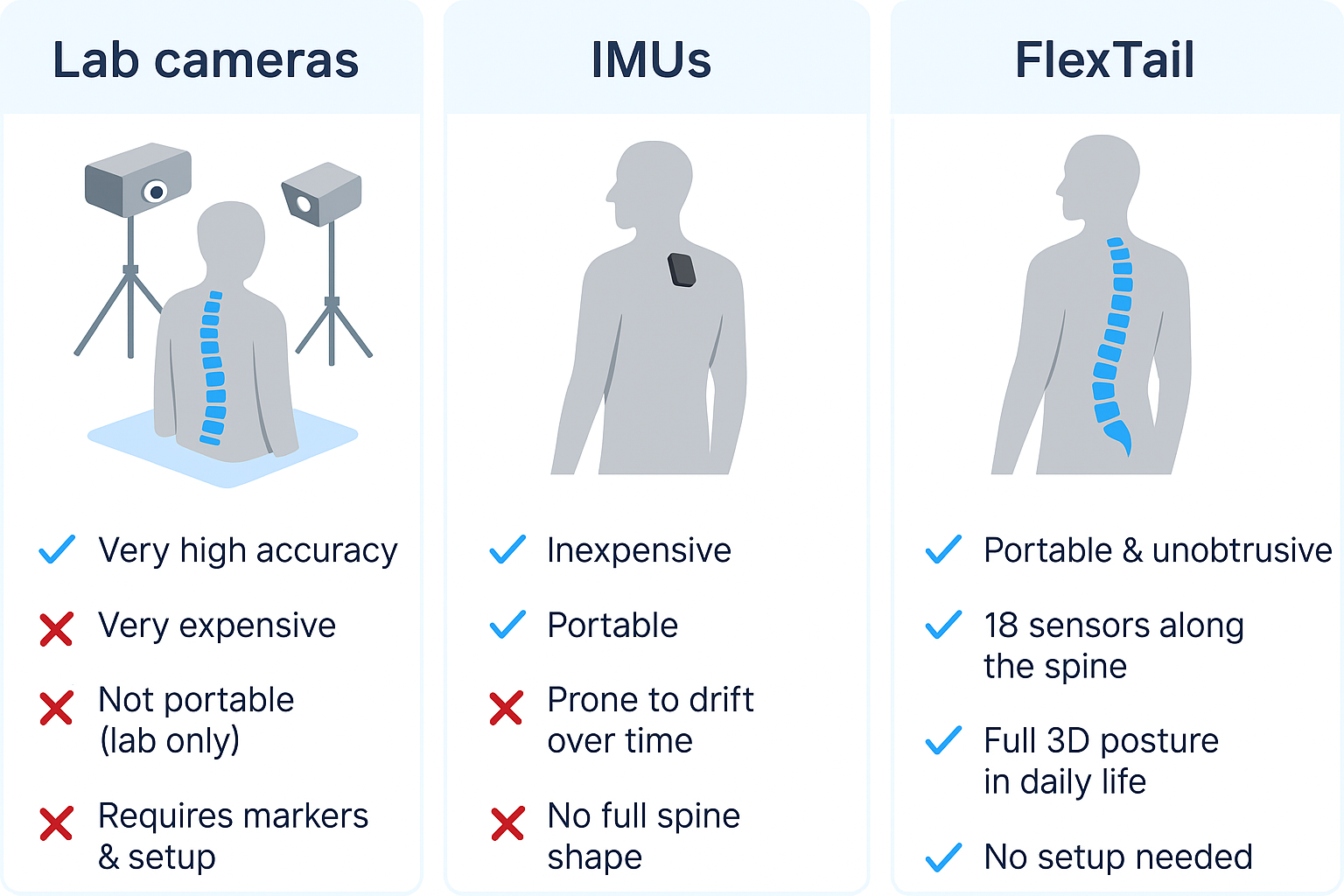FlexTail 101 – Part 1: What is the FlexTail? An Introduction to 3D Posture Tracking
An introduction to the FlexTail, a flexible wearable for 3D spinal posture tracking in daily life.

Bending made visible: The FlexTail Sensor transforms movement into data.
Back pain is one of the most common health issues worldwide – and posture often plays a key role. But while we all know that “sitting too much is bad,” it’s not easy to measure what’s really happening with our spine throughout the day. That’s where the FlexTail comes in.
The FlexTail is a lightweight, flexible strip of printed electronics that you wear discreetly in a shirt along your spine. Unlike bulky motion-capture systems in research labs, it’s designed to work in daily life: at your desk, in the gym, or even while walking around.
Why FlexTail is Different
Traditional posture tracking often relies on:
- Cameras in labs → accurate, but expensive and not portable.
- Single IMU sensors → small, but prone to drift and only capture local movement.
- Manual assessments → subjective and limited to short snapshots.
The FlexTail, on the other hand, uses 18 high-resolution sensor segments to capture the spine’s flexion, lateral bending, and rotation – continuously and in 3D. That means instead of isolated snapshots, you get a complete picture of posture dynamics throughout the day.

Why FlexTail bridges the gap: accurate posture tracking made portable and simple
From Raw Data to Insights
The device streams data via Bluetooth to the rectify app or flexlab studio, where it can be:
- Visualized live (time series, heatmaps).
- Summarized into reports (e.g., daily posture overview).
- Exported as raw CSV files for deeper analysis in tools like Python or MATLAB.
This makes the FlexTail equally valuable for researchers, health professionals, and prevention programs.
The Big Idea
The FlexTail is not a medical device – it’s a research and tracking tool. Its mission: to bring posture tracking out of the lab and into real life. By doing so, it helps answer questions like:
- How much time do we really spend sitting?
- When does poor posture become a pattern?
- Can early feedback help prevent back pain?
Coming Up Next
In Part 2 of FlexTail 101, we’ll dive deeper into the technology: how exactly the 18 sensor points work and how to get started.
🔎 Start you journey: Check out the FlexTail Data Kit – your entry point into 3D posture tracking.